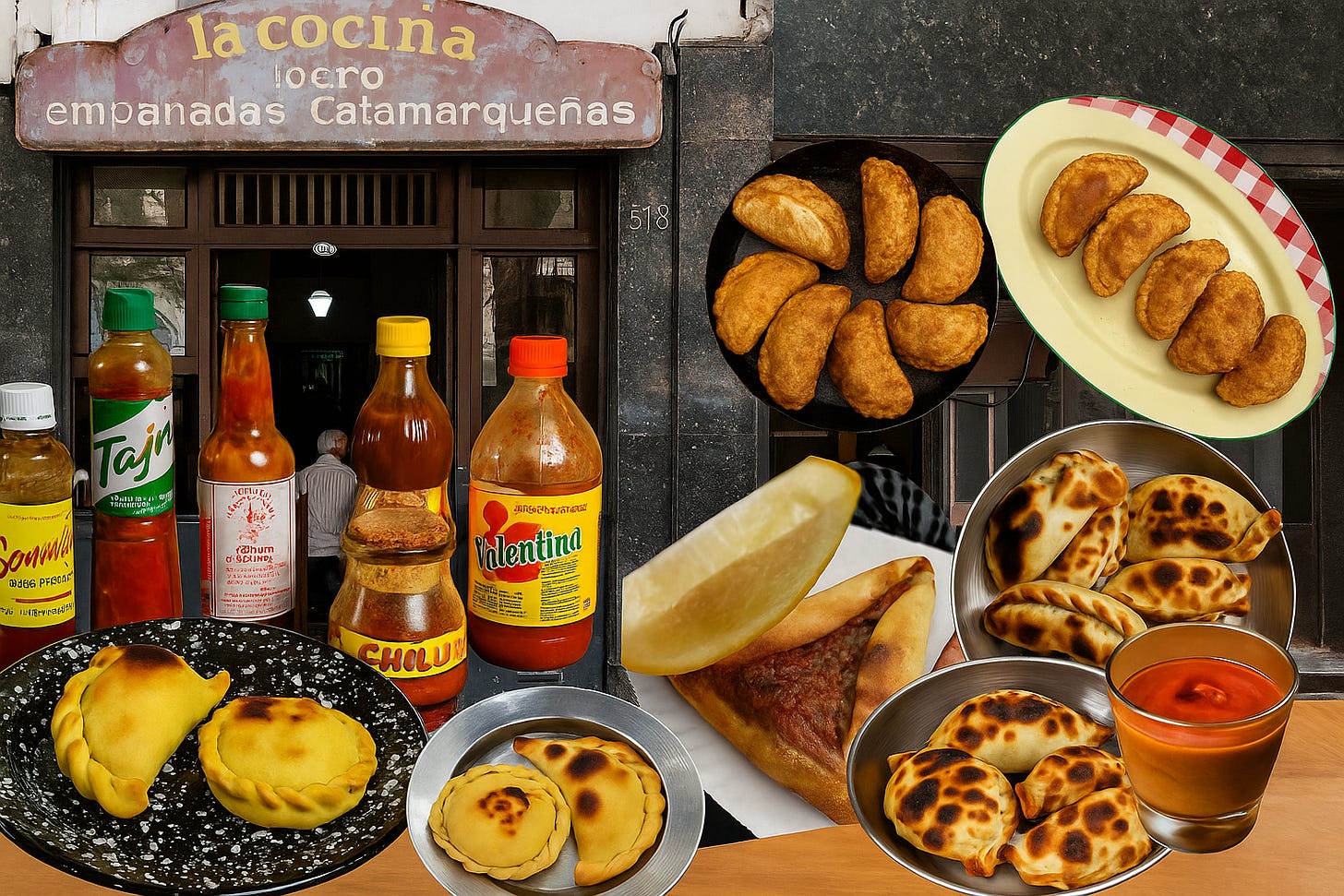
You’d think finding a great empanada in Buenos Aires would be easy. This is the capital of a country where empanadas are practically a birthright. Most regions have their own style, their own filling, their own formula passed down for generations. You see them everywhere—bakeries, bodegones, parrillas, kiosks, gas stations.
So why are so many of them… not very good?
The best empanada I’ve had in recent memory wasn’t in Buenos Aires. It was in the States, at Cafecito, an Argentine restaurant in Santa Fe, New Mexico. I ordered a Southwest-ified flavor filled with roasted green chile, chicken, and provolone, served with a garlicky chimichurri on the side. It cost $5 and was absolutely worth it. Same thing happened in Chicago, at 5411 Empanadas: slow-roasted shredded beef in a Malbec reduction, tucked into a golden, flaky pocket. I remember thinking, why can’t I get this in BA?
It’s not that Buenos Aires lacks great empanadas, it doesn’t. But after years of tasting my way across the city, the misses have far outnumbered the hits. I reached a point where I quit chasing new shops altogether, venturing out only when a place came with rave reviews.
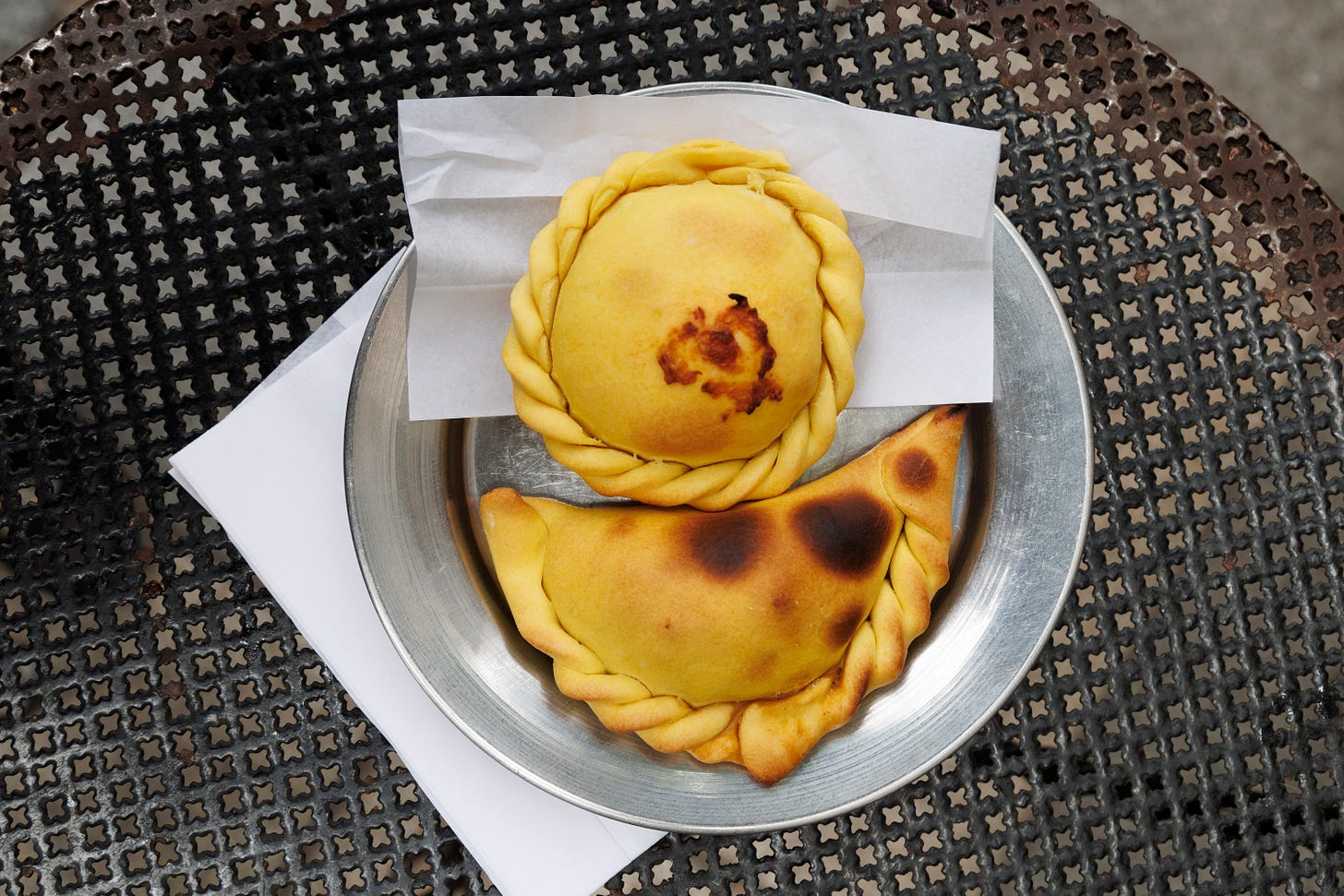
Empanadas Are a Pain in the Ass to Make (And That’s Why Most Are Mediocre)
I almost opened an empanada shop once. It was going to feature both traditional and offbeat fillings, and creating the concept made me obsess even more over what separates a great empanada from a forgettable one. The project didn’t happen, but it gave me a deeper appreciation for how much work goes into doing empanadas right, and why so many in Buenos Aires taste of disappointment.
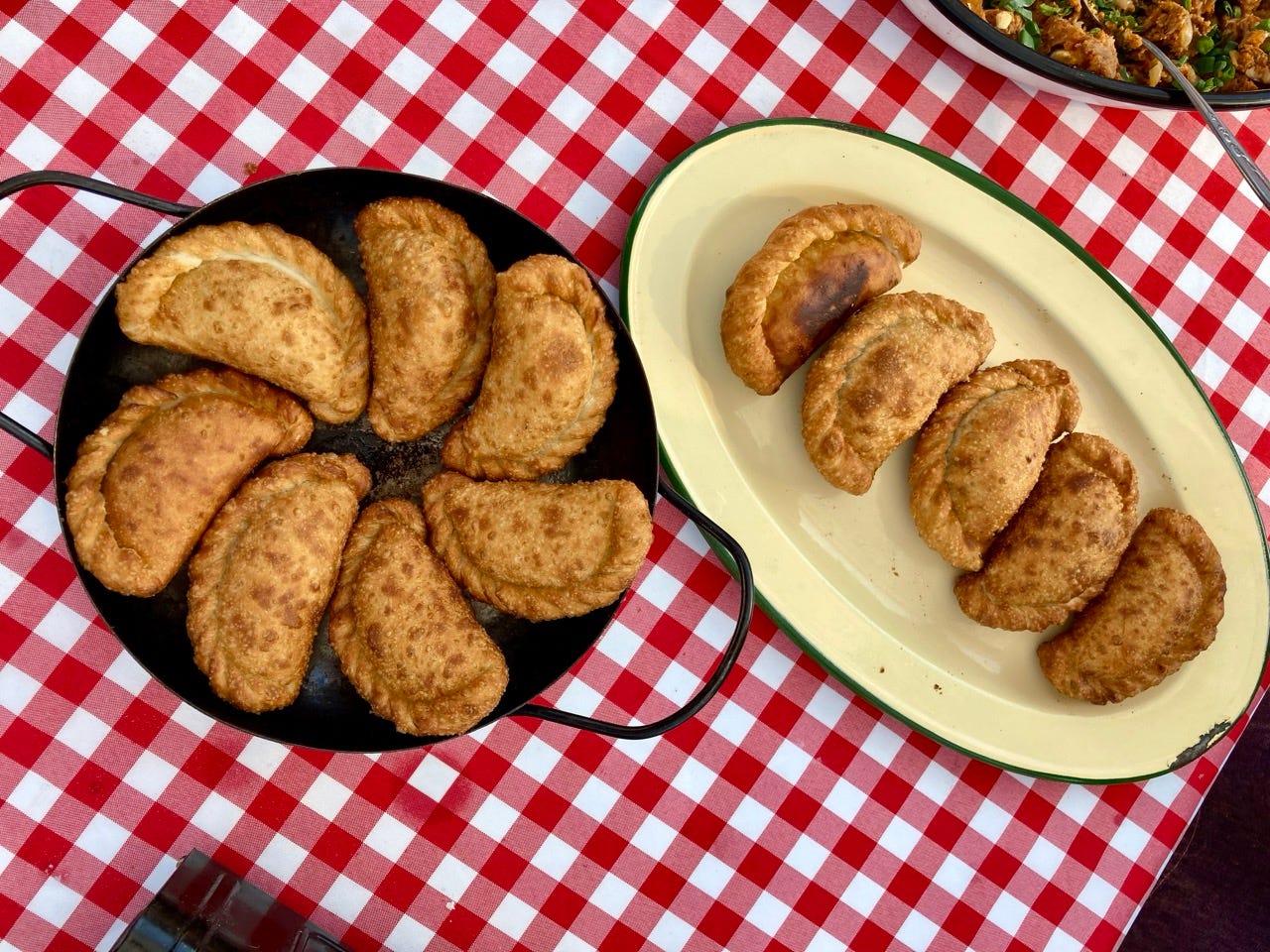
First of all, they’re labor-intensive. The dough alone is a commitment, which is why most places use pre-made wrappers. The filling has to be delicious on its own, cooked, and then cooled. Each empanada gets sealed by hand with a repulgue that’s part art, part function. Then they’re baked or fried—ideally to order. And if they’re fried? Please, let the oil be clean. Fresh. Hot. I don’t want to eat a sad, soggy, reheated empanada that’s been sitting around for hours, do you?
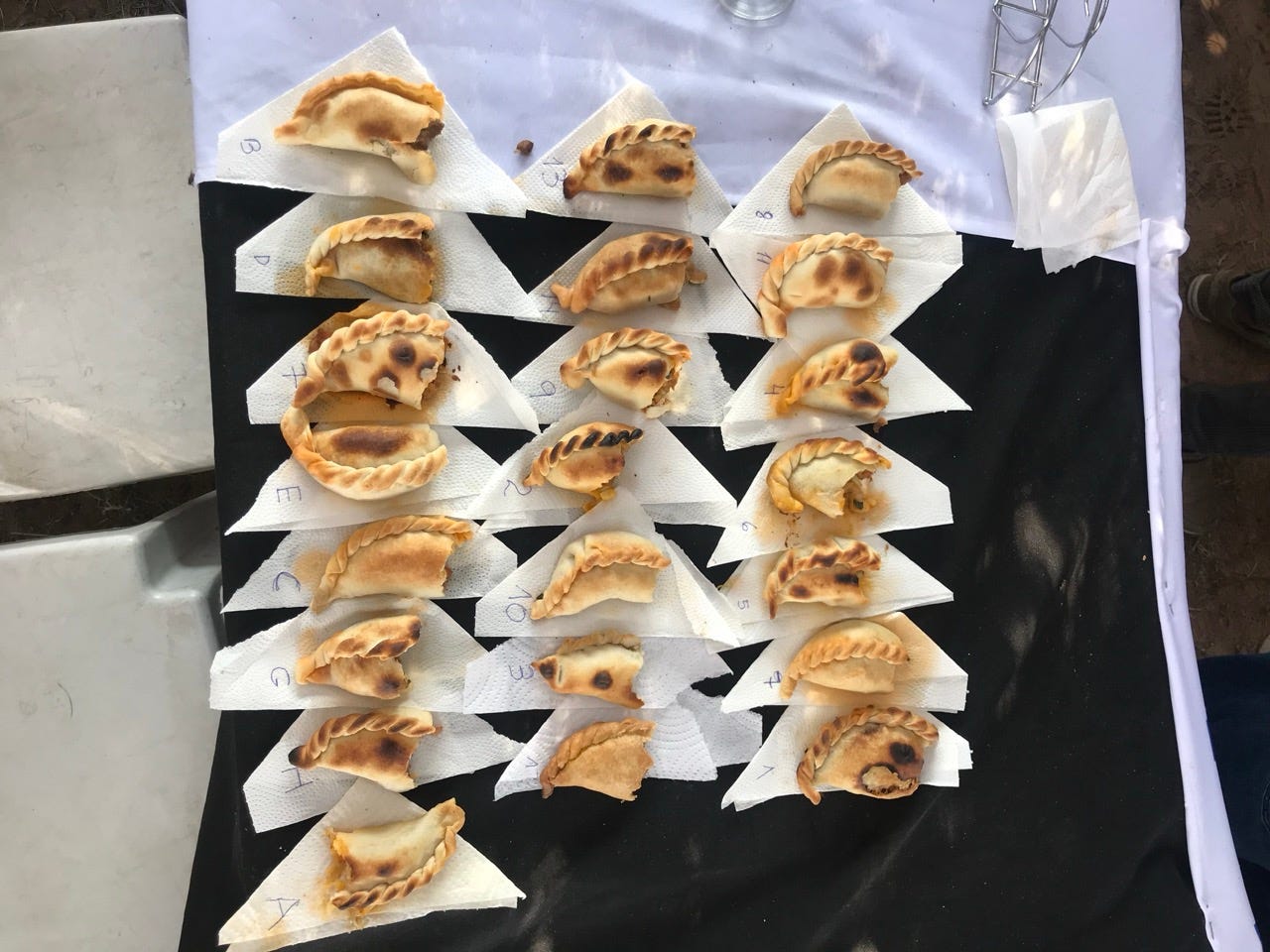
They’re also tedious to make at scale. And to run a lucrative business, you’ve got to move a lot of them. Empanadas are meant to be cheap. They’re grab-and-go food, not a splurge. That pressure to keep costs low means many shops cut corners somewhere.
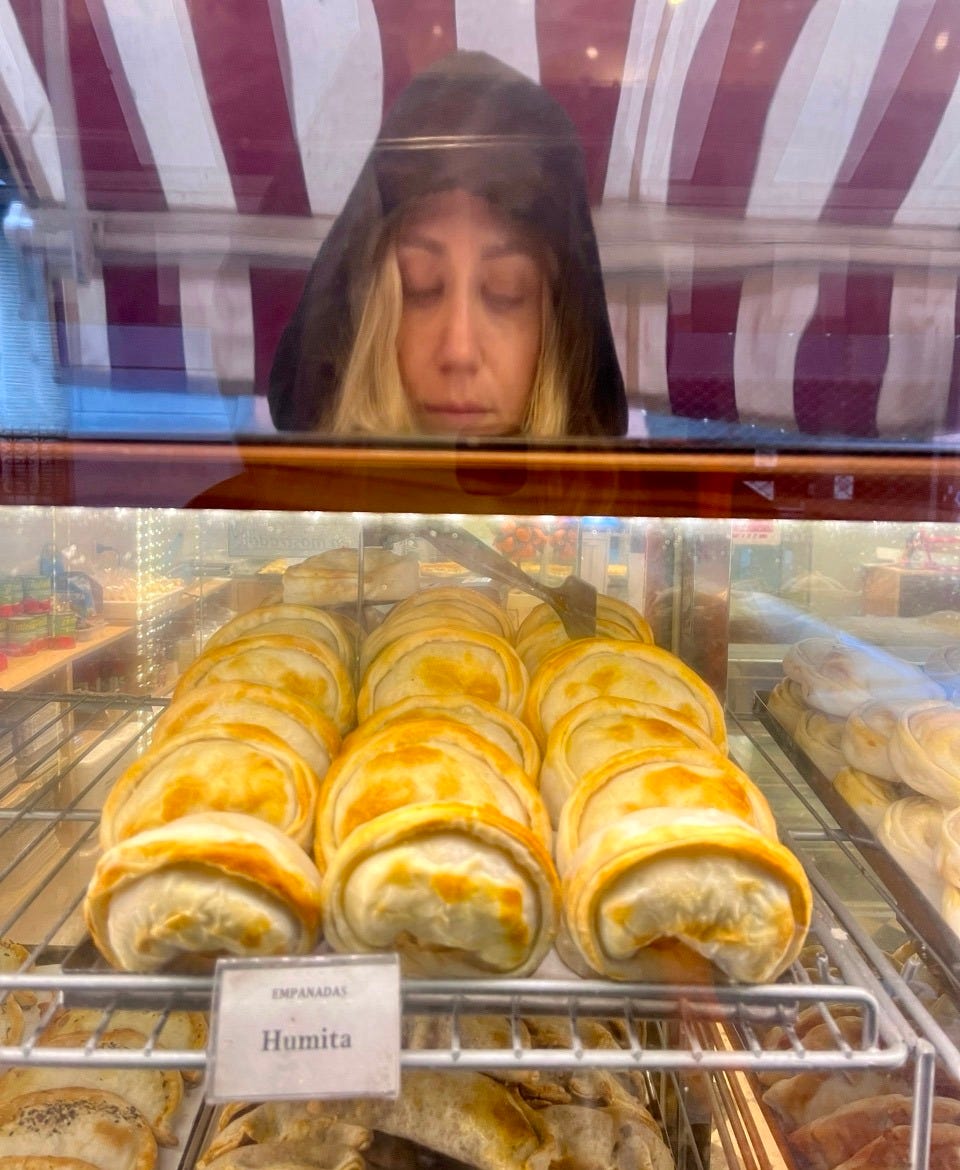
Once, on a food tour, I took a group of tourists to a well-known empanada shop. One of them asked if the dough was homemade. I looked over at the open fridge, saw a stack of La Salteña wrappers, and said nothing. I didn’t have the heart to shatter their artisanal fantasy… the one where a loving abuelita is out back, whispering century-old secrets into the dough and baking them in a clay oven. So I smiled, nodded, and let the dream live another day.
So What Makes a Good Empanada?
It’s not complicated—but it isn’t easy, either. I learned that first-hand at Famaillá’s National Empanada Festival in Tucumán, where I watched dozens of empanada contestants racing dough to ovens while judges inspected repulgue counts and measured filling drip factor.

- The Dough: Not too thick, not too dry. Ideally homemade, but I’ll even accept store-bought wrappers if the next part is incredible.
- The Filling: This has to taste good. Like, spoonable-on-its-own-into-my-mouth good. High-quality ingredients, meat that’s juicy and well-seasoned—not dry, not gristly. At the Festival Nacional de la Empanada empanadas are literally judged on their jugosidad (juiciness).
- The Ratio: A sorry filling-to-dough ratio is the fastest way to ruin a good first impression.
- The Repulgue: A true empanada artist’s paintbrush. In Tucumán, tradition dictates exactly 13 repulgues—a symbolic nod to Jesus and the 12 Apostles. This precise, braided crimp isn’t just for aesthetics; it ensures the empanada remains sealed during cooking, keeping all those delicious juices inside.
- The Temperature: Must be freshly baked or fried. (This technically isn’t “temperature” but… don’t serve me something that’s been sitting under a heat lamp all day.) And of course, hot enough to steam, not hot enough to explode scalding empanada splooge in my face.
- Optional but encouraged: A dipping sauce! I firmly believe empanadas are better when dipped into a sauce on the side. Head north and you’ll find I’m not alone: in Salta and Bolivia they splash on bright, tomato-ají llajua; in Tucumán they squeeze a wedge of lemon. Buenos Aires never really adopted the habit, which feels like a missed opportunity, acid or heat brings the whole pastry to life. Samosas have chutney, dumplings have black vinegar and chili oil, and pierogis have sour cream. I’m not saying pour ranch dressing on empanadas… but I’m also not not saying that.
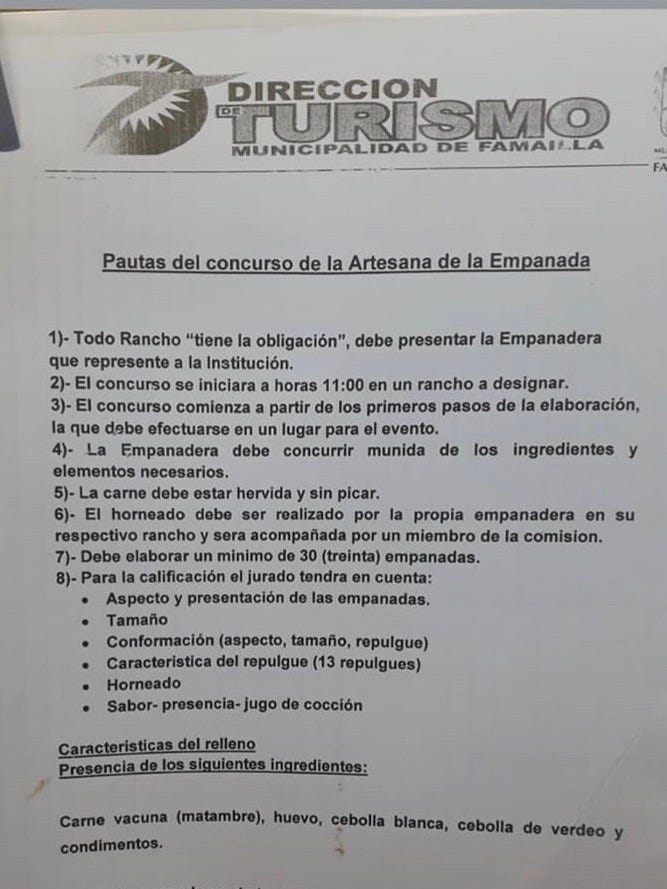
My Favorite Empanada Shops in Buenos Aires (So Far)
Nine spots in nine barrios.
La Cocina – Recoleta / Centro
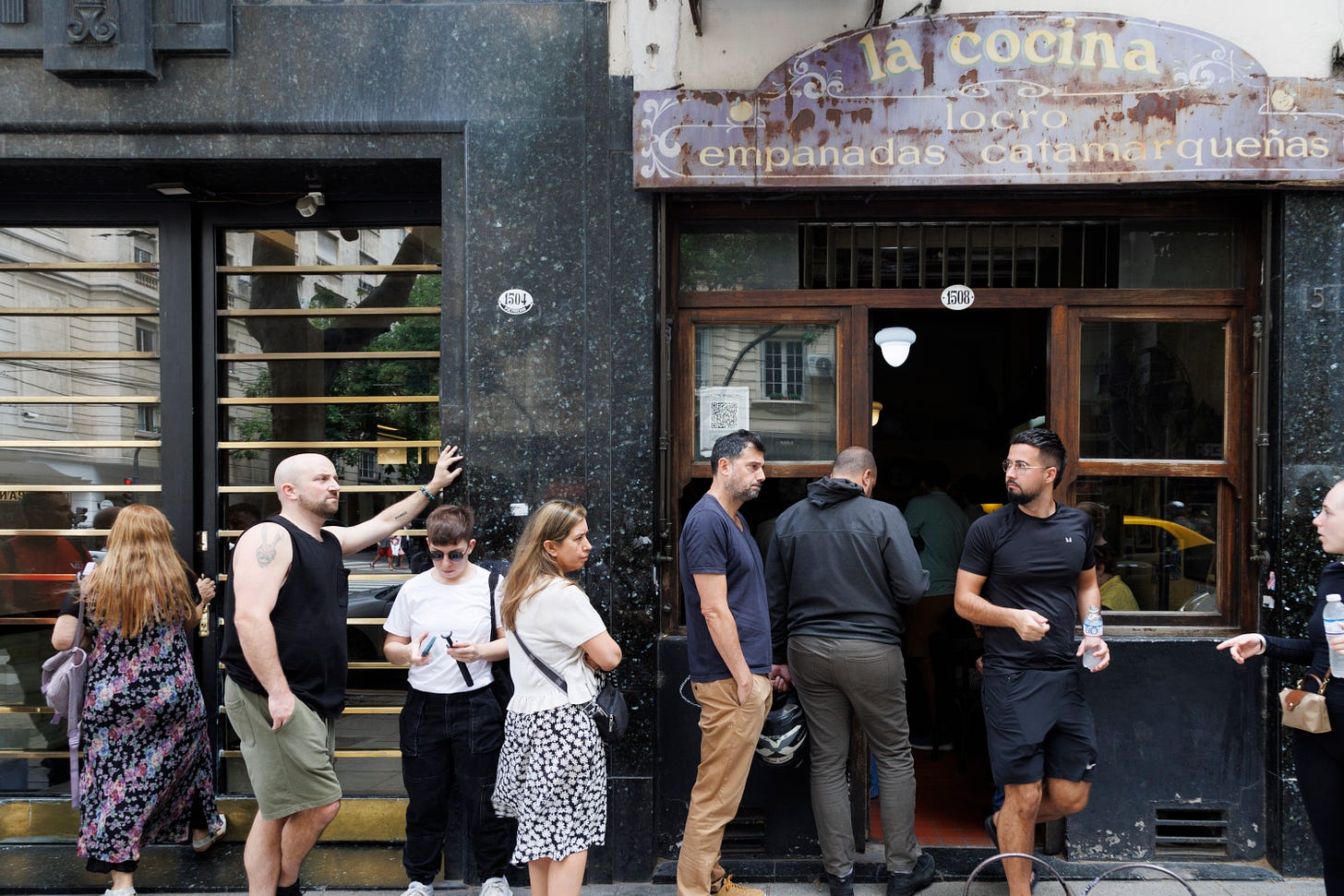
Why: I keep recommending this place for a reason. Catamarqueña-style empanadas—though I’ve never been to Catamarca, and no one seems to agree on what that regional style actually means. My favorites are the spicy pollo (chicken) and the famous Pikachu (cheese, onion, and mild spice, no relation to Pokémon). It’s not new. It’s not a secret. But it’s consistently good in a city where consistency is rare. And if a place has been open for 40+ years and still comes out on top? That means something.
Where: They’ve got two locations. The first time I went was at the downtown spot, hidden in the haunted subsuelo of Galería Boston, a life-changing legendary Buenos Aires moment for me. These days, I usually hit the Recoleta one (it’s near where I get my eyebrows threaded).
El Gauchito – San Telmo
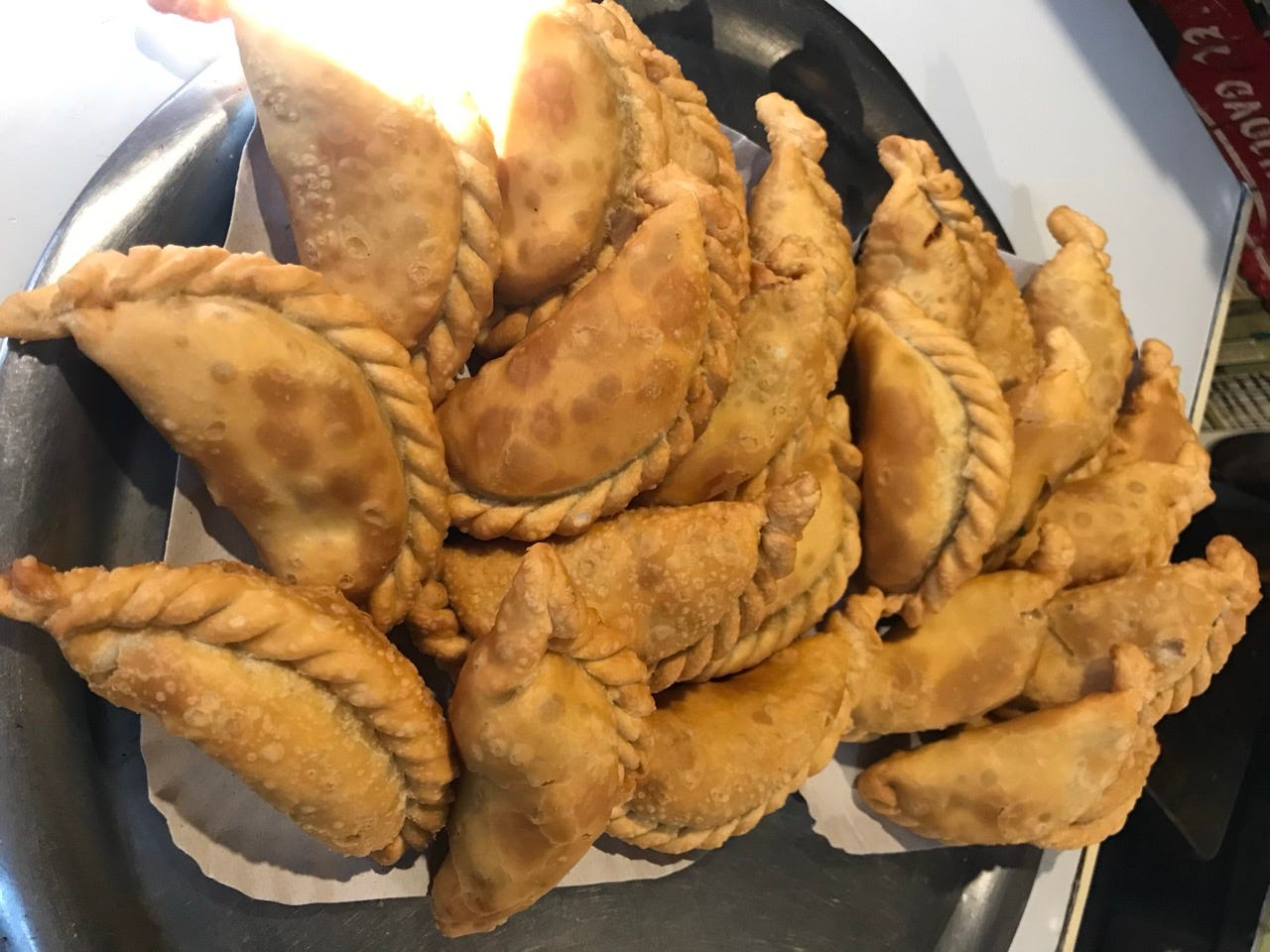
Why: These are some of the best fried empanadas in the city. Empanadas riojanas, to be exact—filled with chopped beef, potato, egg, and green olive. Fried to order so they’re hot, crisp, yet not greasy. You eat one and instantly crave seconds. It comes with a proper spicy sauce (rare), and they don’t skimp on the filling. If it’s cold outside, cozy up into a bowl of locro stew.
Where: A small shop on Avenida Independencia that feels more like an antique stall in the Mercado de San Telmo than an empanada shop. The walls are covered in Gauchito Gil figures, framed photos of Evita, and what looks like Beto, the owner’s, personal tchotchke collection. I even tracked down the artist who made the empanada painting outside and asked for a commission (no luck yet).
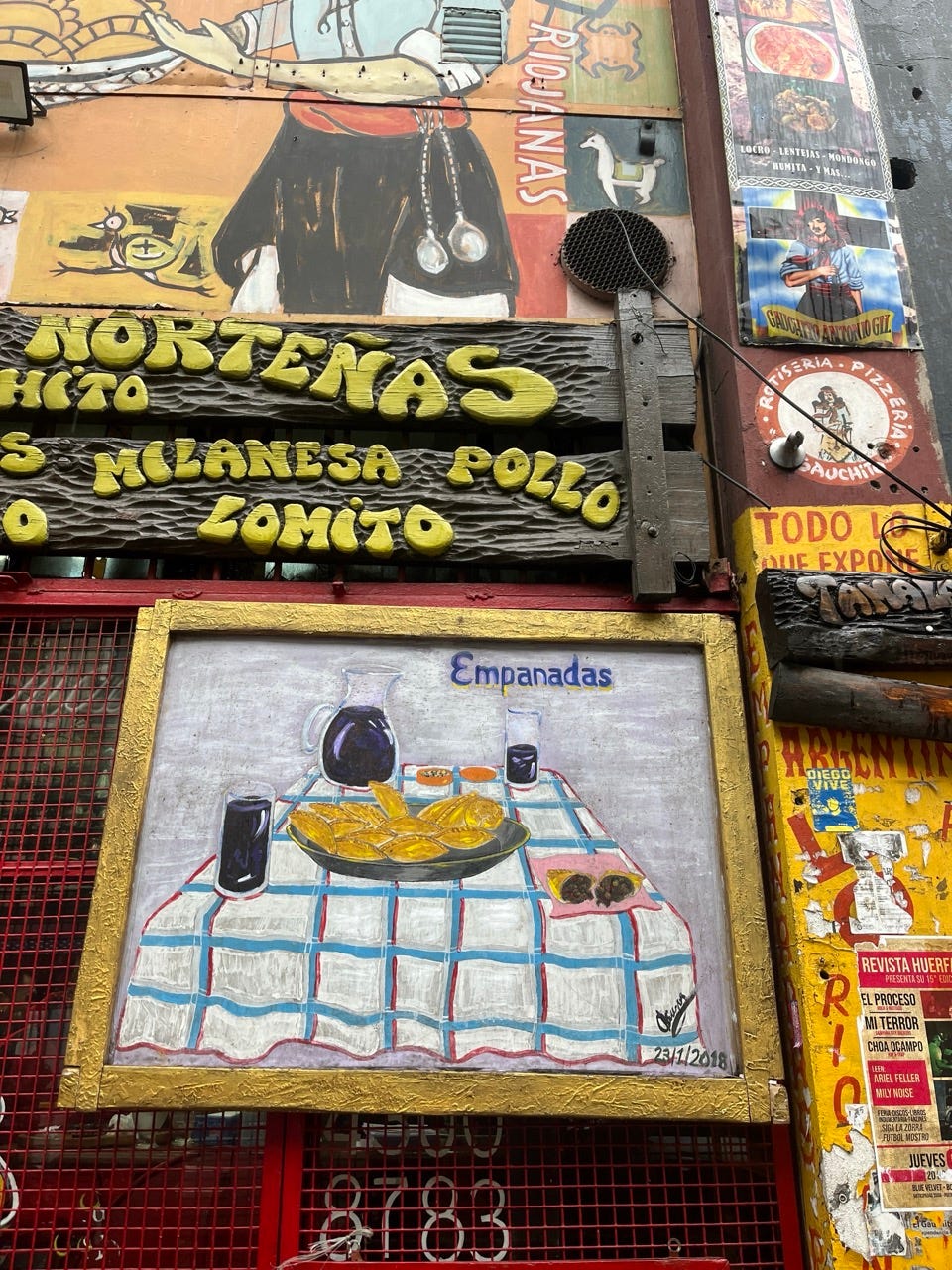
Al Furat – Palermo Soho
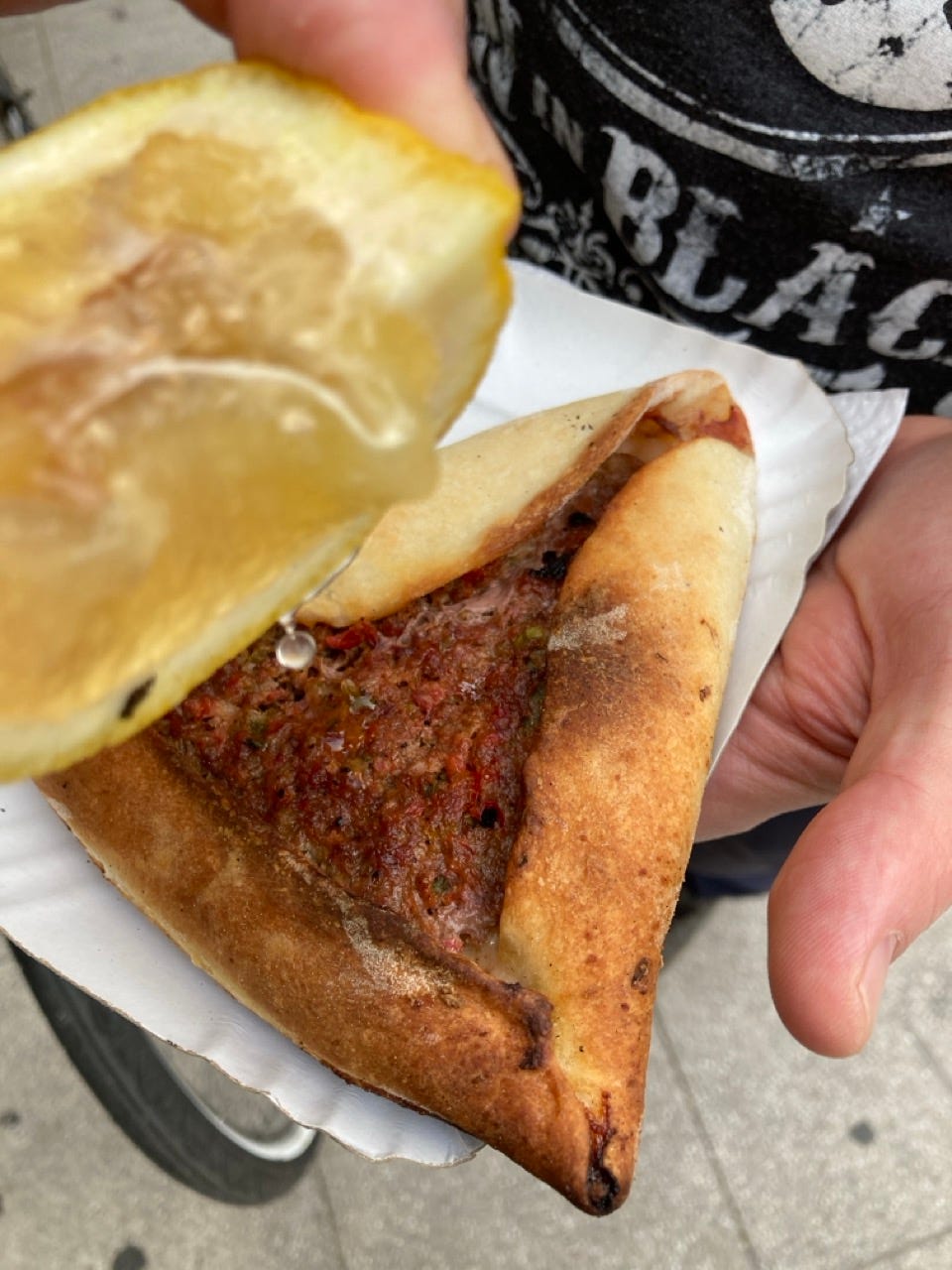
Why: Alicia Zayoud has been quietly making some of the best empanadas in the city for decades. These are empanadas árabes—triangular meat pies rooted in Armenian, Syrian, and broader Middle Eastern traditions. What we call fatay here shares DNA with Armenian lachmayun, but instead of flatbread, it’s folded and baked with lemony ground beef, onion, and tomato inside soft, yeasted dough. There’s also a spinach and ricotta version, all made by hand, baked to order, and served with a lemon wedge on the side.
Where: Just a window on Uriarte. No tables, minimal signage, no branding. But if you walk by at the right time, you’ll see Alicia rolling dough and folding each empanada herself. But don’t bother asking for the recipe. Alicia, who spent years working at Pizzería Angelín, won’t give it out. Not even to friends.
La Paceña – Belgrano
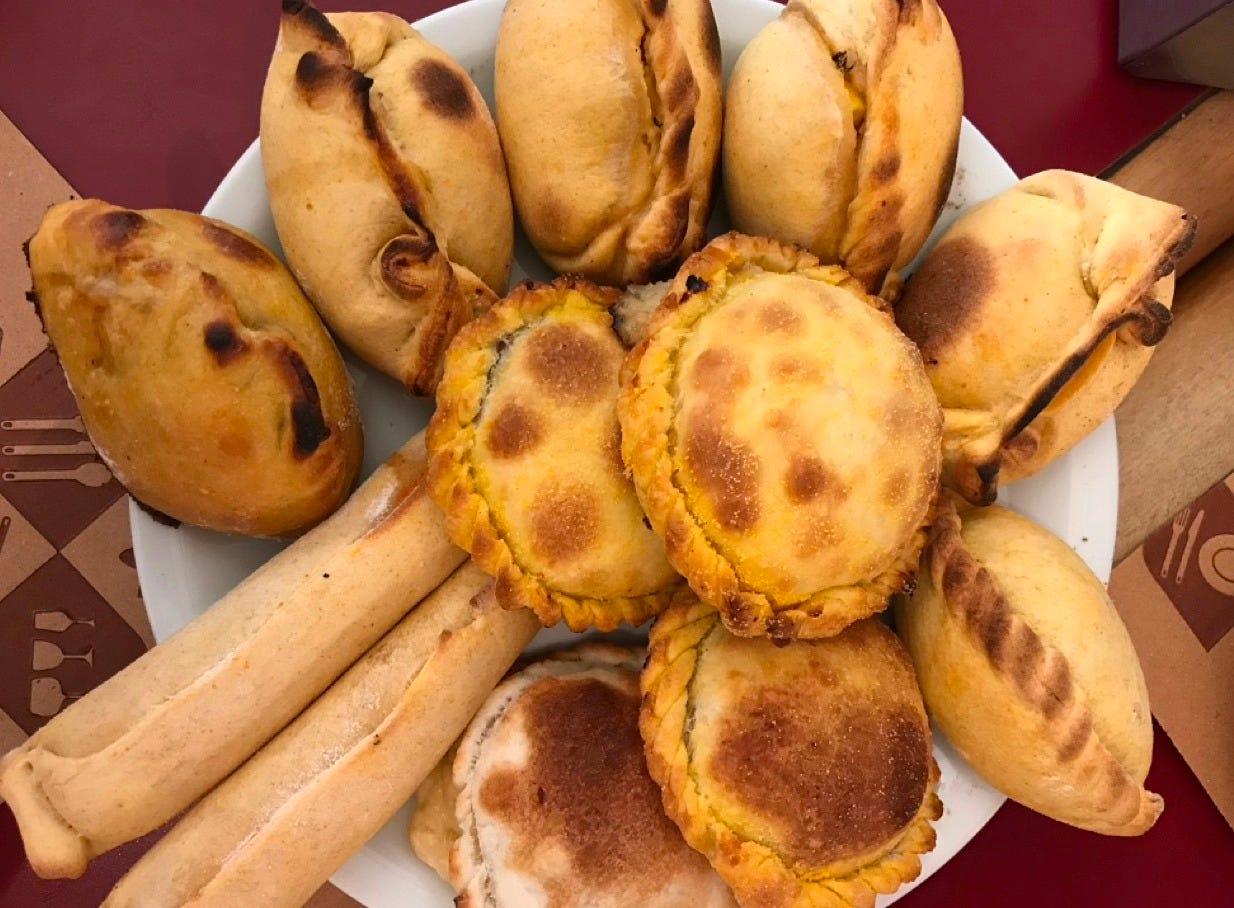
Why: These are Bolivian-style empanadas—larger, a little sweeter in the dough, and filled with something closer to stew. The carne picante actually brings heat (a rare thing in this city), the puka-kapa is a spicy cheese and onion situation, the al-to-ke (basil, tomato, and cheese) is a solid veg option, and the chicken is deeply seasoned and juicy. The fillings are flavorful, the dough has character, and if you’re used to the standard Argentine lineup, these hit differently in the best way.
Where: A sit-down restaurant in Belgrano that’s been open since the early ’90s. You can grab a table or order to go—but either way, you’re here for the empanadas.
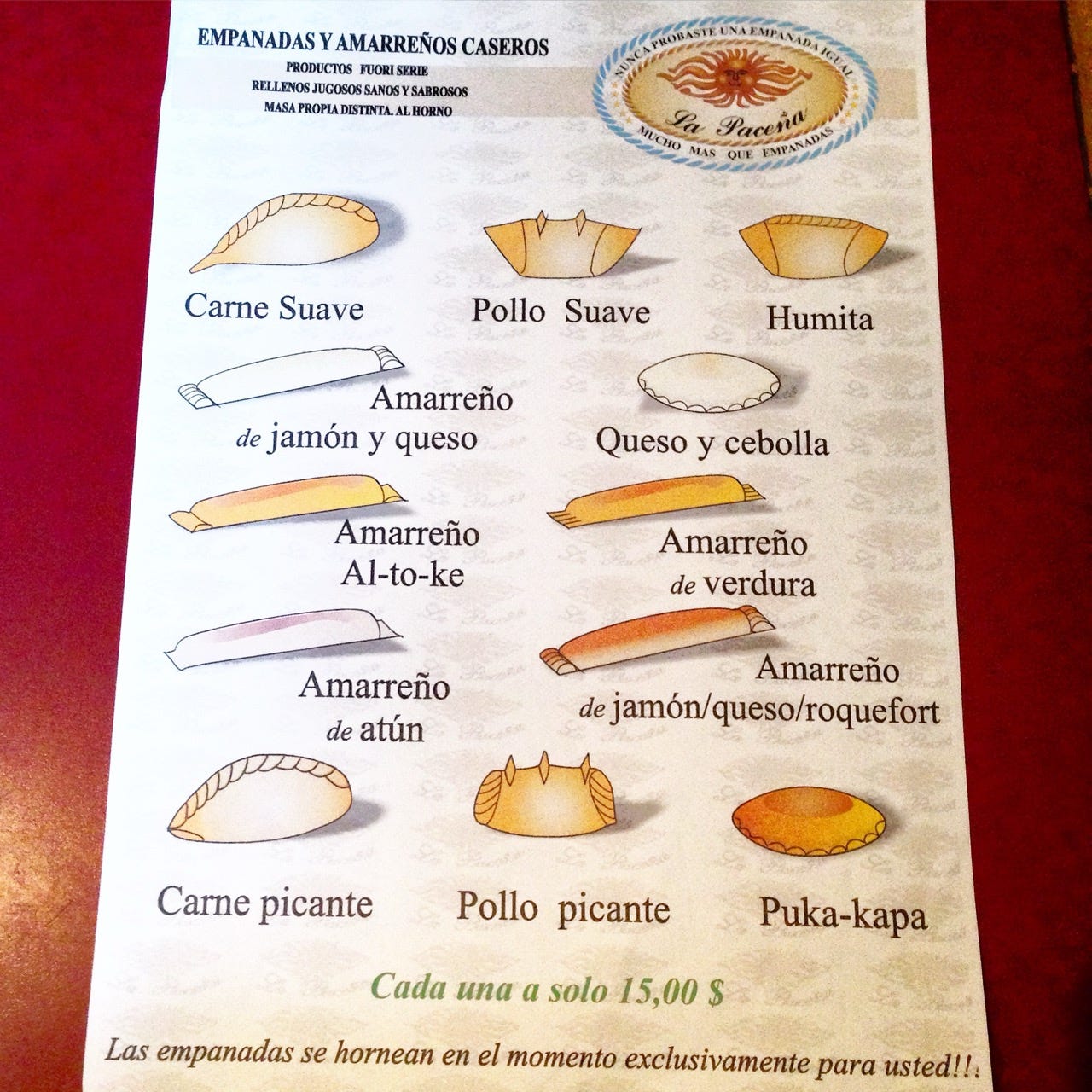
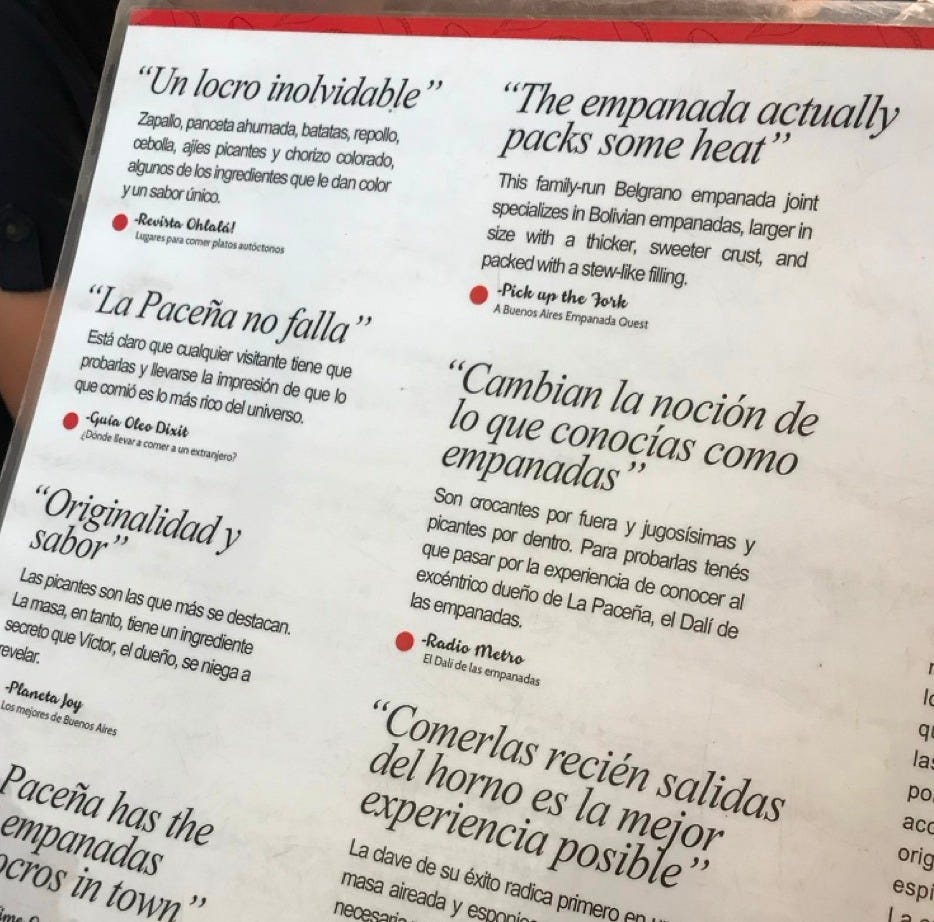
Roma de Abasto – Abasto
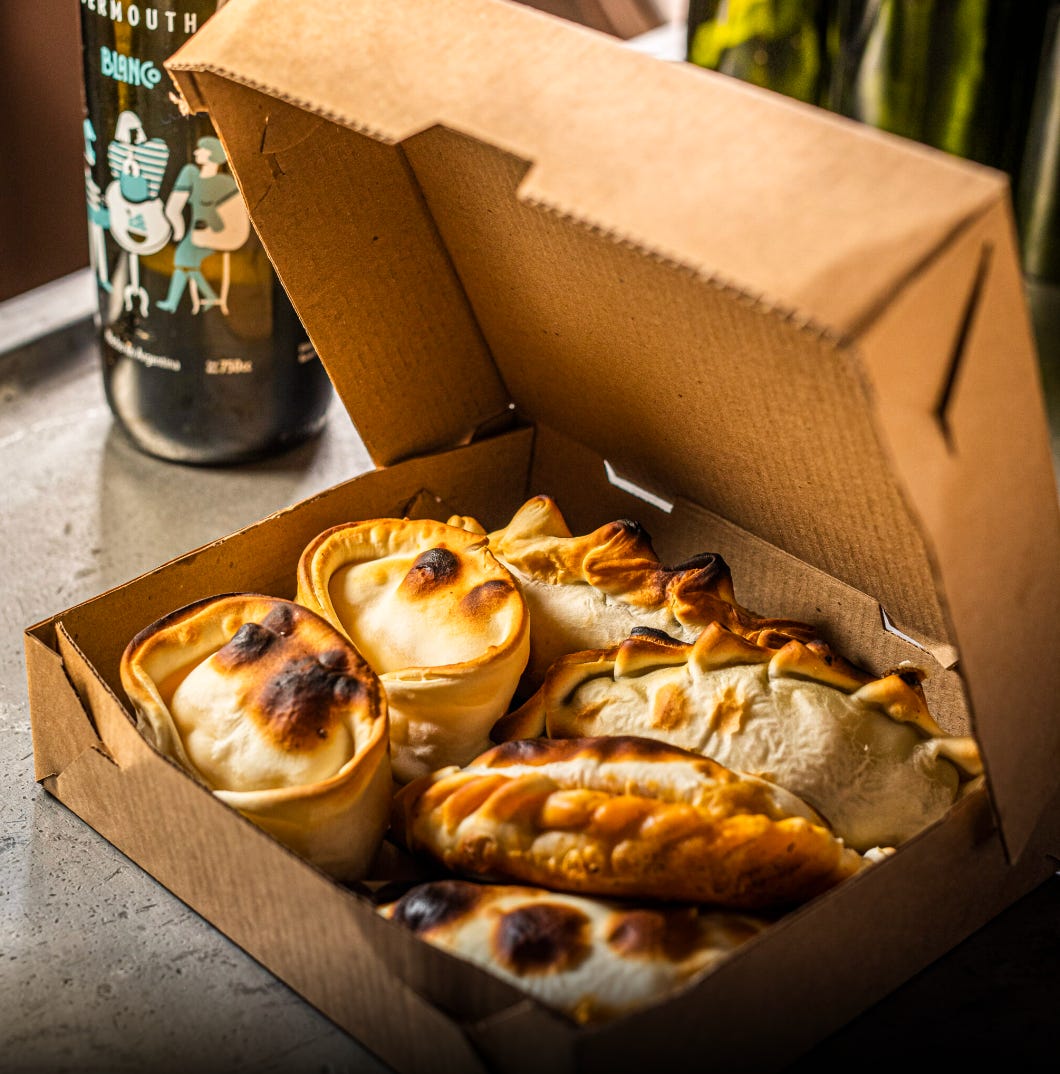
Why: When Julián Díaz and Martín Auzmendi (from La Fuerza) revived this 1940s pizzería-bar, they also resurrected some of the city’s tastiest wood-fired empanadas. Homemade dough gets a kiss of smoke from the quebracho-fueled wood oven and the fillings stay classic Porteño but with a pulse: The carne picante lands with proper ají locoto heat and a chunk of hard-boiled egg, while the pollo a la leña packs wood-roasted chicken, caramelized onion, and sweet paprika. If you’re mushroom-inclined, the queso & hongos folds portobellos, mozzarella, and a little thyme into molten comfort, and the choclo norteña with corn, grated zapallo, leek, basil, nutmeg, tastes like a warm hug hiding in pastry. Order two for a snack, three or more as a meal, chase them with a glass of house vermouth, and remember why these old school institutions matter.
Where: On the corner of Anchorena and San Luis, Roma still looks like the 1920s: oak bar, marble tops, mirrored shelving, soda sifones and vermouth lined up like trophies, and the clay oven glowing behind it all.
Vecindá – Chacarita
Why: In a city where empanada almost always implies beef, Vecindá flips the ratio: Vegetables lead, meat makes a cameo. A clay horno sits center-stage, and every pastry gets a rapid blast of wood-heat before it hits the counter. The menu skews plant-forward: Pascualinda (spinach, coconut béchamel, toasted almonds); Shariff (texturized soy, red pepper, baharat, dried apricot, mint chimichurri); Saint Pauli (caramelized onion, cabbage, soy, cilantro, mustard seed); and La Forest (mushrooms, caramelized onion, mozzarella, rosemary). For the traditionalists, there’s one beef “wild card,” listed—quietly—as Clandestina. Between batches you’ll hear the dings of a Rolling Stones pinball machine or catch a DJ spinning vinyl.
Where: Most nights you can find Vecindá by following the crowd on the corner of Castillo and Bonpland. There’s often an *Argie famous* actor or musician in the mix that I never recognize (someone always whispers the name). It’s casual, cool, a little chaotic, very Chacagiales… exactly what a vegetable-forward empanada shop should feel like.
TayTay – Saavedra
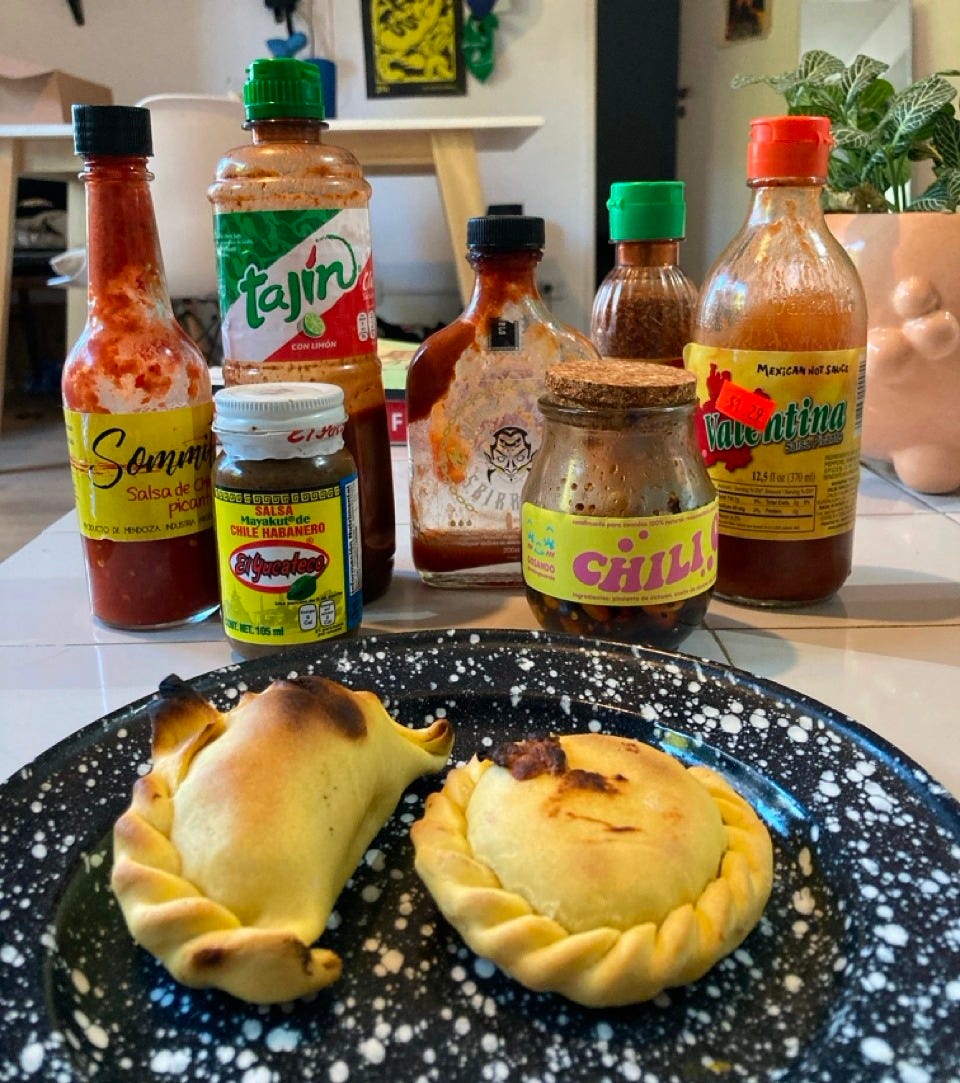
Why: TayTay deals strictly in Bolivian salteñas—football-shaped, palm-sized pastries whose glossy, faintly sweet dough hides a ladle of hot stew. I first met them mid-pandemic, when Nicolás Cámara (then out of film work) was hawking frozen dozens around the city; they became my lockdown survival food. The recipe comes from his Bolivian grandmother’s 1970s Palermo shop, El Horno (closed 2004). The lineup stays tight: I rotate between the chicken, the pucakapa (cheese, onion, ají), and the classic beef. The chicken salteña stuffs pechuga de pollo, caldo, peas, potato, pimentón, comino, and quirquiña into that glossy shell. Beef comes in suave or picante, and there are occasional curveballs like choclo or jamón-y-queso. The drill is always the same: bite a vent, let the steam out, tilt, sip the caldo, bite some more, devour. A side of house llajua (tomato-ají salsa) is mandatory.
Where: A tiny corner shop in Saavedra. I’ll admit I still order delivery, so field research is still pending. Friends, social media, and Google reviews report a lively curb scene and occasional attitude behind the counter with questionable service. Personally, I’ll forgive a little sass if the salteñas stay this good.
La Imperfecta – Palmagro (yes, I did that)
Why: This tiny offshoot of El Imperfecto focuses on Salta-style empanadas—compact, blistered, three-bite beauties baked in a wood-fired clay oven. Not to be confused with the larger, sweet-dough, stew-filled Bolivian salteñas (mentioned above), these are crisp, savory, and deeply satisfying. The menu sticks to five fillings: beef with potato and egg; a house special with ground beef, lemon, peanut, and seven spices; my go-to pollo; molten queso y cebolla; and sweet corn humita. Small menu, big payoff.
Where: Right on the Palermo/Almagro edge — so yes, Palmagro. I think these hybrid barrio names are ridiculous, but I’m also a hypocrite who says them ironically until they stick. One empanada per neighborhood was the rule, and I couldn’t choose. So. Palmagro it is.
La Morada – Monserrat
Why: This is one of those places where the vibe itself makes the empanadas taste better. The walls are covered in vintage soda bottles, Mafalda comics, framed posters, and nostalgic bits of Argentine memorabilia, just the right amount of kitsch. The empanada menu is longer than most, with regional fillings and Porteño faves. They also serve lentil stew, tartas, and locro all year round (what you’d usually eat on patriotic holidays is just a normal weekday lunch here). A great spot to bring visitors if you want them to get a taste of regional home cooking. Back many moons ago when I had an office job downtown, this was my regular lunch break spot. I haven’t been in a while, but I hear it’s still good. Also, some unconfirmed gastro chisme: rumor has it the owners used to work at La Cocina and stole the empanada recipe. No idea if it’s true, but it adds a little drama.
Where: A sit-down spot in Monserrat that feels more like an Argentine history museum than a restaurant. They’ve got another location in Recoleta which I’ve never been.
Bonus for Paid Subscribers
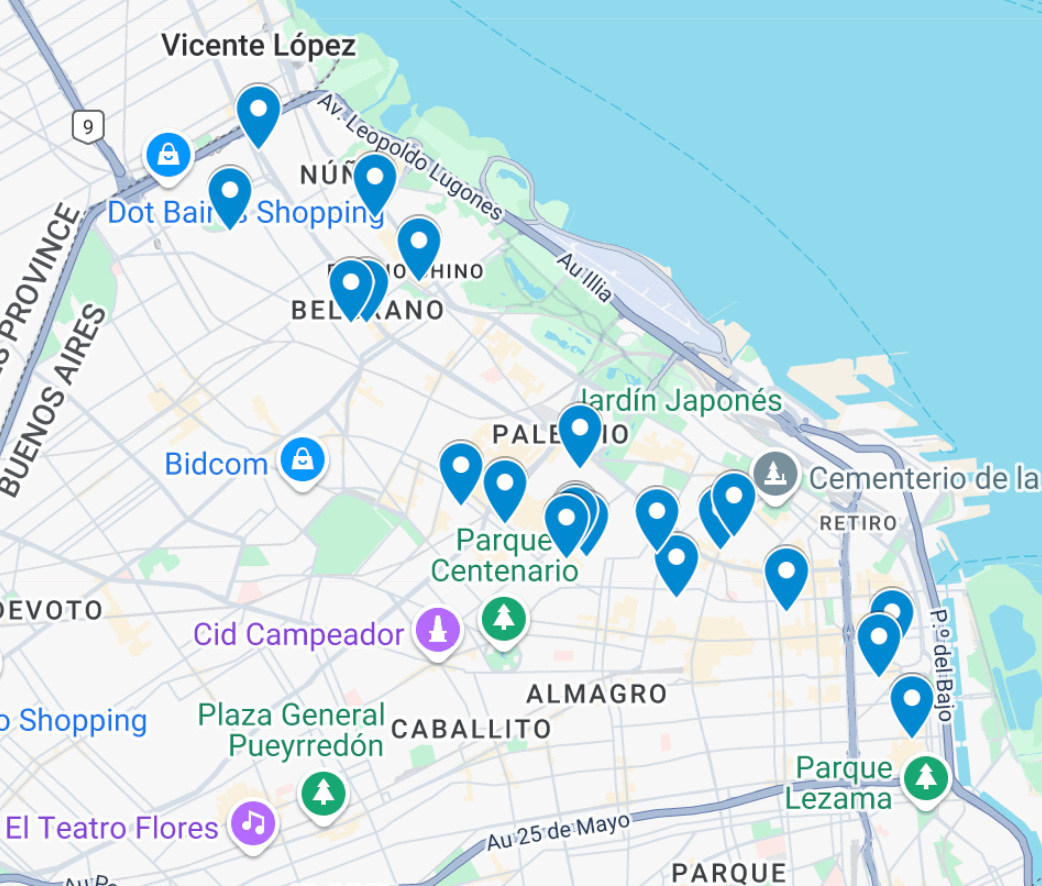
Your Empanada Hit List, Mapped Out
Paid subscribers get an exclusive map and cheat sheet with everything you need: names, neighborhoods, must-orders, and insider notes—plus ten more off-the-record empanadas I didn’t publish here. Perfect for your next empanada crawl, or impressing visitors. Subscribe here.
Leave a Reply